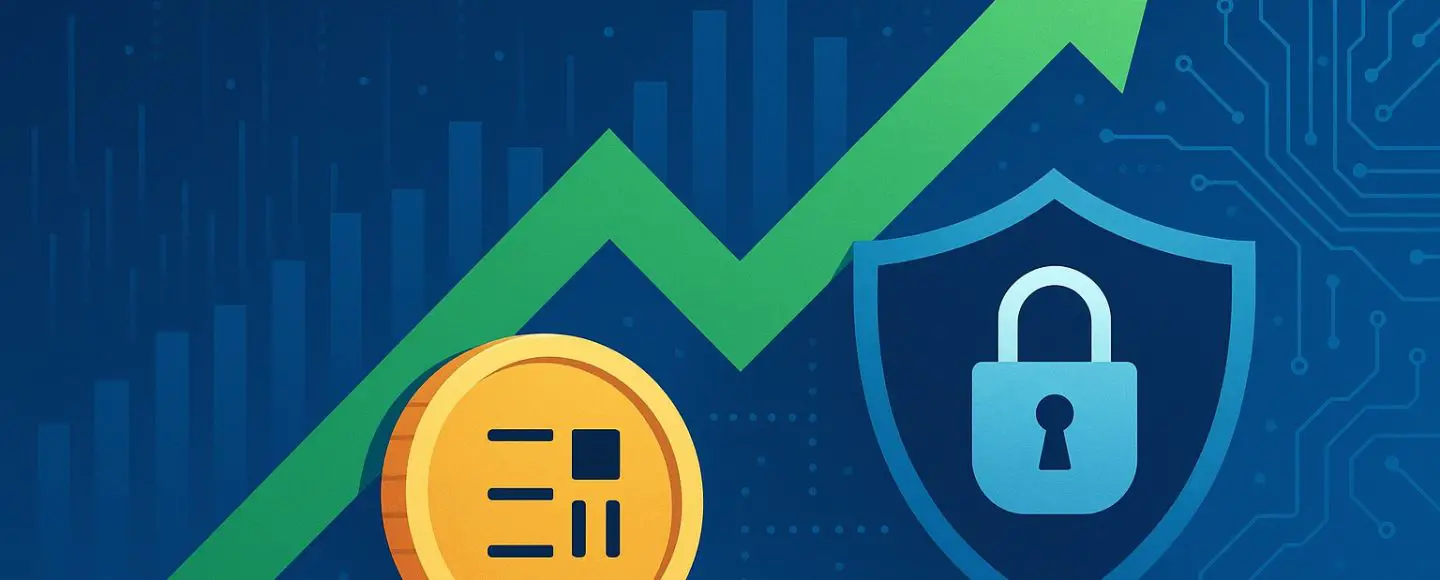
Why BlackRock’s Cybersecurity ETF ($BUG) Is Upgraded Amid AI Surge
As artificial intelligence reshapes the digital threat landscape, Why BlackRock’s Cybersecurity ETF ($BUG) Is Upgraded Amid AI Surge explores the strategic alignment between AI advancements and growing cybersecurity demands. This timely upgrade of the iShares Cybersecurity and Tech ETF ($BUG) reflects investor interest in defense infrastructure against increasingly complex AI-driven threats. The article explains how increased enterprise spending, stronger financial performance, and evolving industry dynamics place $BUG ahead of many peers. These factors position it as a focal point in cybersecurity-focused portfolios.
Key Takeaways
- AI adoption has amplified cyberattack vectors, increasing demand for advanced cybersecurity solutions.
- $BUG’s recent upgrade is supported by performance metrics, sector relevance, and heightened investor demand.
- Compared to peers like HACK and CIBR, $BUG shows stronger returns and focused strategic allocation.
- Cybersecurity spending is expected to exceed $215 billion by 2027 as organizations counter AI-enabled threats.
Also Read: AI Solutions to Cut Energy Use and Emissions
AI and Cybersecurity: A Converging Catalyst
Artificial intelligence is improving operational efficiency but is also introducing more complex threats. Adversarial AI, such as automated phishing campaigns and deepfake-based fraud, is becoming a major concern across industries including finance, healthcare, and national security. The increase in threat sophistication is pushing companies to upgrade their digital infrastructure, leading to surging investment in cybersecurity products and services.
A Gartner report estimates global cybersecurity spending will reach $188.3 billion in 2024
Also Read: Generative AI’s Rising Energy Costs Impact Climate
Inside BlackRock’s $BUG ETF
The iShares Cybersecurity and Tech ETF (ticker: $BUG), managed by BlackRock, gives investors focused exposure to cybersecurity firms supporting digital infrastructure. As of Q1 2024, $BUG includes 35 global equities involved in network security, zero-trust protocols, and cloud protection.
| Top Holdings (as of 2024) | Weight (%) |
|---|---|
| Cloudflare Inc. | 6.8% |
| Palo Alto Networks Inc. | 6.5% |
| Zscaler Inc. | 6.1% |
| Fortinet Inc. | 5.7% |
| Okta Inc. | 4.9% |
The fund tracks the NYSE FactSet Global Cyber Security Index and avoids companies with substantial revenue outside cybersecurity. This clear thematic approach helps $BUG benefit directly from increased investments tied to AI-related security challenges.
Performance Snapshot: $BUG vs CIBR vs HACK
With growing interest from investors, performance metrics are key in comparing leading cybersecurity ETFs. Here is a look at how $BUG compares with First Trust’s CIBR and ETFMG’s HACK.
| Metric | $BUG | CIBR | HACK |
|---|---|---|---|
| 2024 YTD Return | +12.4% | +10.1% | +9.8% |
| 1-Year Return | +18.5% | +16.2% | +14.9% |
| Expense Ratio | 0.47% | 0.60% | 0.60% |
| Sharpe Ratio (3-Year) | 0.84 | 0.76 | 0.71 |
| Average Daily Volume | 85,000 | 220,000 | 135,000 |
CIBR has broader diversification and higher trading volume. Still, $BUG leads in both year-to-date and 12-month returns. Its lower expense ratio and stronger three-year Sharpe ratio suggest a more appealing balance between risk and reward. These factors contributed to the recent upgrade from analysts tracking thematic funds.
What Analysts Are Saying
JP Morgan’s technology analysts stated, “Cybersecurity is no longer niche. It is foundational. The rise of adversarial AI is pushing companies to treat digital defense as a core budget priority.”
Morningstar shared a similar view. The firm noted that ETFs like $BUG are increasingly attractive to long-term investors seeking precision within digital tech trends.
BlackRock described $BUG as well aligned with “future-forward portfolios.” The firm explained that growing AI complexity is helping cybersecurity shift from being a purely defensive sector to a high-growth opportunity.
Enterprise Case Examples of AI Threat Escalation
Real-world impacts are driving demand for cybersecurity. These examples show how AI-related threats are raising the stakes for enterprise protection:
- Healthcare Breaches: In late 2023, ransomware tools powered by AI targeted hospital systems in California, Illinois, and Utah. The attackers used synthetic email content to evade detection mechanisms.
- Financial Deepfakes: In Q4 2023, a major investment firm in London faced deepfake video impersonations of its CEO during a wire fraud attempt.
- Supply Chain Exploits: Hackers used AI-enhanced code to disrupt logistics APIs tied to shipping ports on the East Coast of the United States.
These incidents are changing how companies and policymakers approach digital risk. They also help reinforce the case for including cybersecurity ETFs in long-term portfolios.
Key Risks and Structural Considerations
- Sector Concentration: $BUG concentrates holdings in specialized firms, increasing exposure to any single company’s financial or regulatory troubles.
- Liquidity: While improving, $BUG’s trading volume remains lower than CIBR’s. This could affect execution in large institutional trades.
- Passive Strategy: $BUG follows an index that prioritizes pure-play cybersecurity firms. In volatile markets, broader exposure strategies may show greater resilience.
FAQ
What is the best cybersecurity ETF?
The best cybersecurity ETF depends on your investment preferences. $BUG, CIBR, and HACK are all strong options. Based on recent performance, targeted exposure, and expense efficiency, $BUG is currently a favorite among investors focused on AI-related cybersecurity themes.
How does AI impact cybersecurity stocks?
AI presents both challenges and opportunities for cybersecurity. It enables more powerful threats but also strengthens detection and response tools. As demand for protection grows, cybersecurity companies benefit from higher revenue and stronger market positioning.
References
Brynjolfsson, Erik, and Andrew McAfee. The Second Machine Age: Work, Progress, and Prosperity in a Time of Brilliant Technologies. W. W. Norton & Company, 2016.
Marcus, Gary, and Ernest Davis. Rebooting AI: Building Artificial Intelligence We Can Trust. Vintage, 2019.
Russell, Stuart. Human Compatible: Artificial Intelligence and the Problem of Control. Viking, 2019.
Webb, Amy. The Big Nine: How the Tech Titans and Their Thinking Machines Could Warp Humanity. PublicAffairs, 2019.
Crevier, Daniel. AI: The Tumultuous History of the Search for Artificial Intelligence. Basic Books, 1993.






